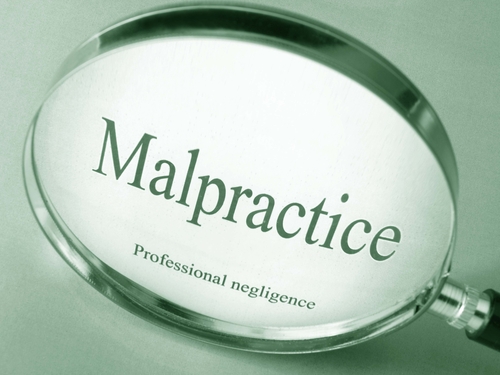Chemerinsky: Why the Supreme Court's ruling on race-based evidence matters

Erwin Chemerinsky.
The U.S. Supreme Court’s decision Feb. 22 in Buck v. Davis is important for the criminal justice system on many levels. The court clarified the standard for federal courts of appeals when considering whether to allow appeals from the denial of habeas corpus petitions. Also, the court found ineffective assistance of counsel, something relatively rare for the Supreme Court. Perhaps most importantly, the court spoke emphatically about the need to eliminate any taint of race from criminal trials.
Facts and procedural history
Duane Buck was convicted of killing two people in Texas in 1995. At the penalty phase, where the jury was to consider whether to impose the death penalty, the initial question was whether Buck posed a future danger. At the time of Buck’s trial, a Texas jury could impose the death penalty only if it found—unanimously and beyond a reasonable doubt—“a probability that the defendant would commit criminal acts of violence that would constitute a continuing threat to society.”
Buck’s lawyer called several witnesses, including two expert witnesses, on the question of Buck’s future dangerousness. One of these experts, Dr. Walter Quijano, had been appointed by the presiding judge to conduct a psychological evaluation. Dr. Quijano thought it significant that Buck’s prior acts of violence had arisen from romantic relationships with women. Buck, of course, would not form any such relationships if imprisoned for life. In determining whether Buck was likely to pose a danger in the future, Dr. Quijano considered seven “statistical factors.” The fourth factor was “race.” His report read: “4. Race. Black: Increased probability. There is an overrepresentation of Blacks among the violent offenders.”
Despite having this report that said that Buck was more likely to be dangerous because of his race, the defense counsel called Dr. Quijano as a witness. On direct examination from Buck’s lawyer, Dr. Quijano stated that certain factors were “know[n] to predict future dangerousness” and he identified race as one of them.
On cross-examination by the prosecutor, Dr. Quijano repeated this. The prosecutor asked: “You have determined that the sex factor, that a male is more violent than a female because that’s just the way it is, and that the race factor, black, increases the future dangerousness for various complicated reasons; is that correct?”
Dr. Quijano replied, “Yes.”
Buck was sentenced to death. His conviction and sentence were affirmed on appeal, and his state and federal habeas corpus petitions were denied. While these proceedings were pending, the State of Texas confessed error in six other cases where individuals had been sentenced to death in which Dr. Quijano had been a witness and said that a defendant was more likely to be dangerous because of his race. But it did not do so in Buck’s case because it was Buck’s lawyer who had called Dr. Quijano as a witness.
Buck’s third habeas corpus petition in federal court, which was accompanied by a motion to set aside the prior decision pursuant to 60(b)(6) of the Federal Rules of Civil Procedure, claimed ineffective assistance of counsel based on his lawyer calling Dr. Quijano as a witness. The district court denied the petition, concluding that Buck could not show that he was prejudiced because the jury likely would have sentenced him to death even without Dr. Quijano’s testimony.
Buck sought to appeal the denial of his habeas corpus petition to the New Orleans-based 5th U.S. Circuit Court of Appeals, which under federal law requires a certificate of appealability. This requires “a substantial showing of the denial of a constitutional right.” The 5th Circuit denied a certificate of appealability, concluding that Buck’s case was “not extraordinary at all in the habeas context.”
Supreme Court Reverses
The Supreme Court, in a 6-2 decision, reversed the 5th Circuit. Chief Justice John G. Roberts Jr. wrote the opinion (PDF) for the court; only Justices Clarence Thomas and Samuel A. Alito dissented.
The first issue before the court was whether the federal court of appeals erred in not granting a certificate of appealability. As the court noted, the standard for this was articulated in Miller-El v. Cockrell (2003). The key question in granting a certificate of appealability is whether “jurists of reason could disagree with the district court’s resolution of his constitutional claims or that jurists could conclude the issues presented are adequate to deserve encouragement to proceed further.” This threshold question should be decided without “full consideration of the factual or legal bases adduced in support of the claims.” Notably the court in Miller-El said: “When a court of appeals sidesteps [the COA] process by first deciding the merits of an appeal, and then justifying its denial of a COA based on its adjudication of the actual merits, it is in essence deciding an appeal without jurisdiction.”
The court concluded that in denying Buck a certificate of appealability, the 5th Circuit had improperly decided the merits of his claim. Chief Justice Roberts explained that in asking whether Buck had shown “extraordinary circumstances,” the 5th Circuit focused on the wrong question. Roberts wrote: “We reiterate what we have said before: “A ‘court of appeals should limit its examination [at the COA stage] to a threshold inquiry into the underlying merit of [the] claims,’ and ask ‘only if the District Court’s decision was debatable.’”
Second, the court found that there was ineffective assistance of counsel. The test for ineffective assistance of counsel was articulated in Strickland v. Washington (1984), which requires that a defendant who claims to have been denied effective assistance must show both that counsel performed deficiently and that counsel’s deficient performance caused him prejudice.
As for the former, the court said it was clearly ineffective assistance of counsel for the defense to call Dr. Quijano as a witness. The court wrote: “It would be patently unconstitutional for a state to argue that a defendant is liable to be a future danger because of his race. No competent defense attorney would introduce such evidence about his own client.”
As for the latter, the court concluded “it is reasonably probable—notwithstanding the nature of Buck’s crime and his behavior in its aftermath— that the proceeding would have ended differently had counsel rendered competent representation.” The court powerfully stated: “But when a jury hears expert testimony that expressly makes a defendant’s race directly pertinent on the question of life or death, the impact of that evidence cannot be measured simply by how much air time it received at trial or how many pages it occupies in the record. Some toxins can be deadly in small doses.”
Importance
The case is significant in many ways. First, the court reaffirms that in deciding whether to grant a certificate of appealability, a court should not make a determination on the merits, but instead focus on whether the issue is reasonably debatable. Second, the court’s finding of ineffective assistance of counsel is notable because there are relatively few cases in which the court has found that this exacting standard has been met. Finally, and perhaps most importantly, the court was emphatic that “it is inappropriate to allow race to be considered as a factor in our criminal justice system.” If the court truly follows this, it could have an effect in so many areas where race undoubtedly greatly influences the administration of justice for those accused of crimes.
Erwin Chemerinsky is Dean and Distinguished Professor of Law, and Raymond Pryke Professor of First Amendment Law at the University of California, Irvine School of Law. He is an expert in constitutional law, federal practice, civil rights and civil liberties, and appellate litigation. He’s the author of seven books, including The Case Against the Supreme Court (Viking, 2014).



